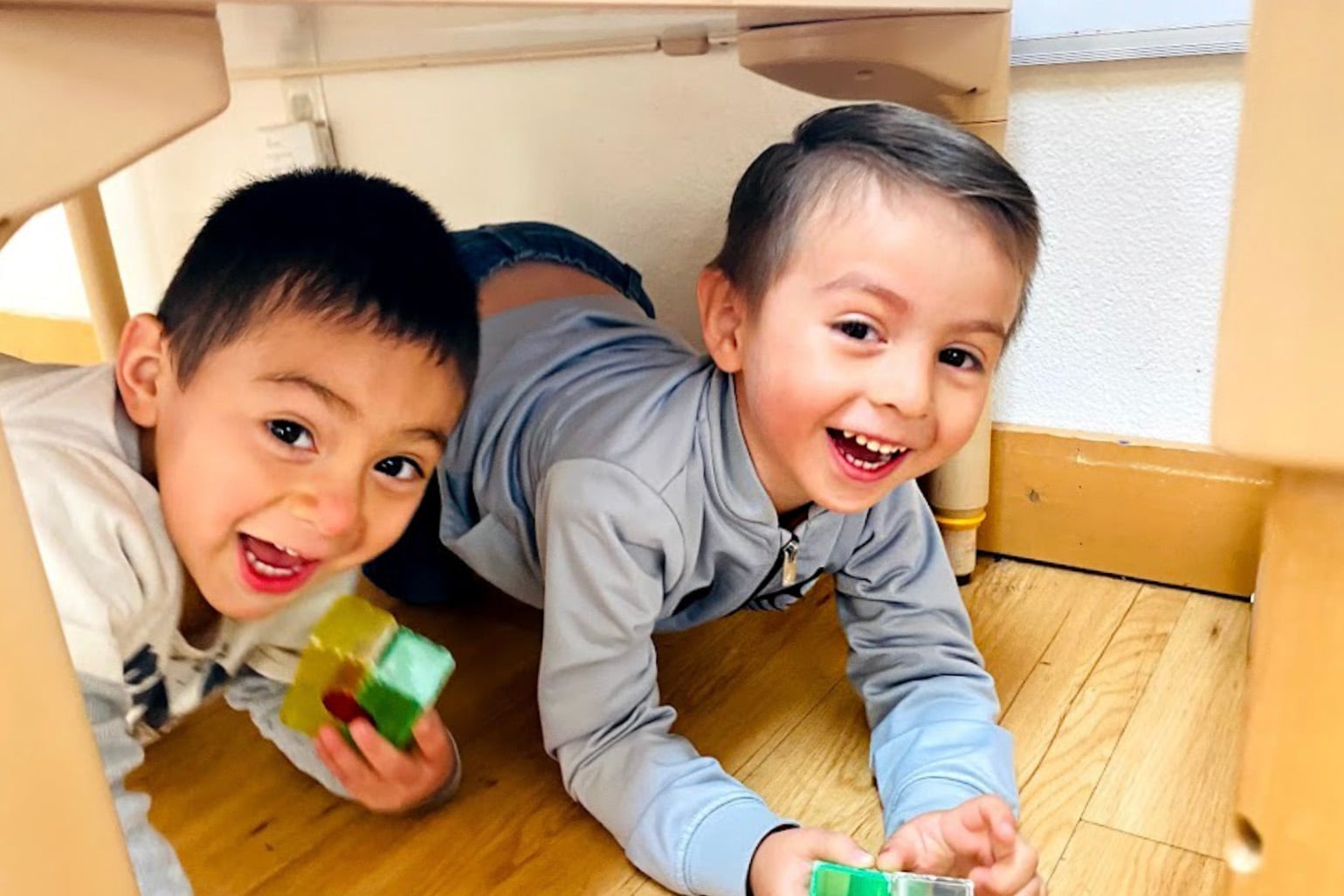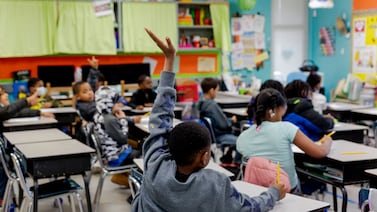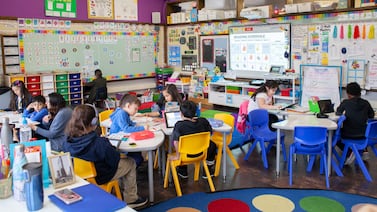When Michelle Oger told staff at her child care center in the mountain town of El Jebel they’d soon be getting a $500 monthly stipend, “Everybody was kind of in disbelief,” she said, “like, ‘Wait, really?’”
The promise of more money suddenly put new options within reach: Snow tires, car repairs, a vacation with the kids. One full-time teacher who worked at Starbucks on the weekends said she’d finally be able to quit the second job.
The new stipend for child care employees in Eagle County is funded through a lodging tax, a mechanism that Colorado communities, especially in mountain resort regions, are increasingly tapping to generate new dollars for housing and child care for people who live there. The idea is that local workers power the tourism industry, so visitors should contribute to efforts that support a stable workforce. Such taxes also reframe child care as a larger economic interest rather than just a mom-and-dad issue.
At least 10 Colorado towns, counties, or local marketing districts currently earmark some of their lodging tax revenues for child care. Besides Eagle County, they include Summit, Clear Creek and San Juan counties, and towns like Estes Park and Georgetown. In November, two more communities will ask voters to approve lodging tax measures to support child care: the City of Pueblo and the Town of Ridgway in western Colorado.
“Pueblo is the first non-mountain-resort town in the whole state to pursue this,” said Sarah Martinez, a Pueblo City Council member and the facilitator of a group that has worked for years to find ways to boost child care funding.
Once an industrial powerhouse in southern Colorado, Pueblo is not primarily a tourist destination. However, it does host several big events each year, including the Colorado State Fair, the Chile and Frijoles Festival, and a hotrod show.
While most lodging taxes for child care and housing have passed, Martinez worries Pueblo’s vote could be close. Among those opposing the city’s measure is the Pueblo Lodger’s Association.
If the measure, Question 2A, passes, it would levy a 1.5% tax on hotel and motel stays — about $1.77 a night — that would generate more than $600,000 annually. The proceeds would help Pueblo families who earn too much to qualify for state child care subsidies but still struggle with the cost of care.
The lodging tax in Ridgway, a Western Colorado town considered the Gateway to the San Juan Mountains, would help pay for an affordable housing project that would include a child care center.
Colorado counties and local marketing districts, which are created by communities or regions to promote tourism, have been allowed to use lodging taxes to support child care or housing only since a law change in 2022. Before that, lodging taxes in these jurisdictions had to be used for tourism efforts. Some Colorado cities and towns have long had the authority to levy a lodging tax to support child care, but few have done so.
Josh Mantell, fiscal advocacy and special projects manager at the Bell Policy Center, said he expects to see more communities seek lodging taxes for child care.
“The state does not have the revenue to properly and adequately fund a lot of what we should consider public priorities, and funding for child care is at the top of that list” he said.
“It’s great to see communities step forward and do what they need to do,” he said.
At the same time, he worries about the inequities that may emerge as some communities pass lodging taxes and others don’t or can’t.
Millions for child care in ski country
The lodging tax Eagle County voters approved in 2022 will raise about $3 million a year for housing and child care. Such funds are typically distributed in the form of grants or other types of financial aid that providers or parents apply for. Each taxing community comes up with a spending plan based on local needs.
The new $500 monthly stipends will start flowing to full-time child care employees in November. County officials also plan to use the lodging tax proceeds to hire a health consultant to work with local child care programs, offer providers help with mortgage or rental payments, and assist with building improvements that create more infant and toddler seats.
“What’s so great about lodging taxes is it’s sustainable funding,” said Sam Markovitz, Eagle County’s early childhood initiatives manager.
Oger, executive director at Blue Lake Preschool in El Jebel as well as another center in neighboring Garfield County, hopes the new stipends will help attract and retain employees. Although her employees in Garfield County don’t qualify for the Eagle County stipends, the center’s board decided to use other funding to ensure they get the same monthly payment as their Eagle County peers.
Teachers at Blue Lake make $22 to $31 an hour depending on their experience, and aides start at $20 — about the same as the Wendy’s restaurant down the road pays. While the center has a core group of veteran teachers, Oger said there are also employees who cycle through after discovering they don’t enjoy mountain life or can’t afford to live locally.
Although Blue Lake has raised staff pay three times in three years, Oger said, “It’s still not enough to keep up with the rising costs.”
Making child care a viable career
It was a big deal when voters in Estes Park’s local marketing district approved a lodging tax increase from 2% to 5.5% for housing and child care, said Carlie Bangs, Estes Park’s housing and child care manager.
“To feel like the community sees you and is willing to support you … is really impactful,” she said.
Most of the proceeds from the tax will go toward housing initiatives in the northern Colorado town, which bills itself as the “base camp” for Rocky Mountain National Park. About 12%, or $600,000, will go toward child care.
In December, centers will get a subsidy of $25,000 to $32,000, and home-based programs can qualify for $4,000. The goal is to ensure that teachers get at least $20 an hour and aides get at least $16 an hour. Additional lodging tax money will go toward tuition assistance for families, and rental, mortgage, or building improvement help for providers.
Bangs said $600,000 is more than adequate this year, since the town has only three child care centers and three licensed home-base programs. But with about 500 children under 5 in the area, Estes Park needs more child care seats.
Bangs hopes the influx of lodging tax dollars can help make caring for children a viable option for prospective providers.
“We want to incentivize people to get licensed,” she said. “We want it to be something they do because they can put food on their table and go on vacation and live a fulfilling life with that career.”
Ann Schimke is a senior reporter at Chalkbeat, covering early childhood issues and early literacy. Contact Ann at aschimke@chalkbeat.org.






